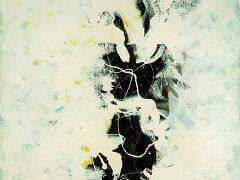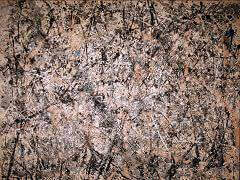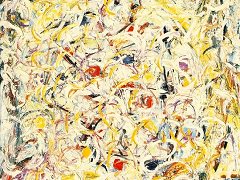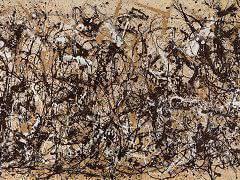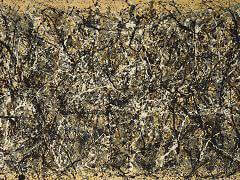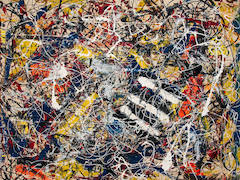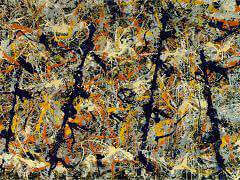Gothic, 1944 by Jackson Pollock
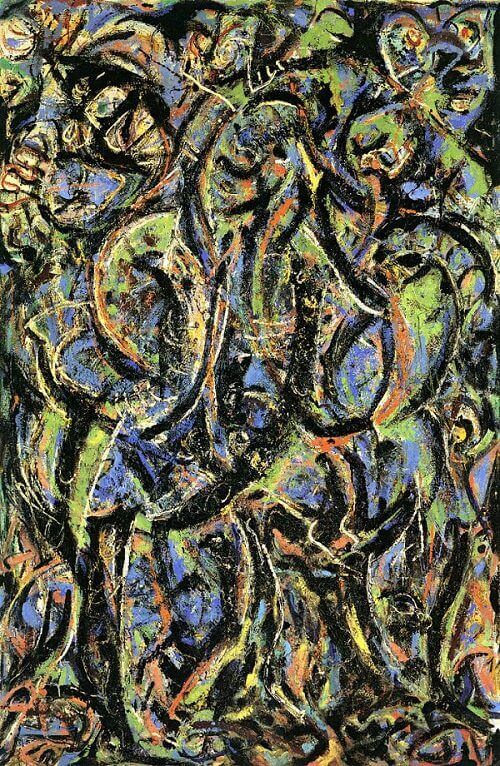
Gothic 1944, demonstrates with great clarity the beginnings of a transition in the Pollock's mind. Bolstered perhaps by his experience with the Mural, Jackson Pollock began to move more definitely away from dependence on therapeutic sources, combined with the innovations of modern European art, to a rapidly increasing nonobjectivity and self-reliance.
A brief notation by Pollock probably concerns the canvas known as Gothic. "Blue detail (Mural) Black Dancer with three parts," Pollock scrawled on the back of an old Art of This Century catalogue, implying that this painting
originally was a study for an intended larger work. This description is followed with dimensions that match Gothic, confirming its identity. When Gothic is viewed with Pollock's own characterization in mind, it
appears that Picasso's 1925 Three Dancers - a work Pollock had used as a jumping-off point before - was also behind this composition, and Pollock acknowledged that he
had still been thinking of Picasso when he executed this canvas. It remains now to discover how revisionist his approach to Picasso as a source had become.
Gothic's cool "stained-glass" palette is markedly different from Mural's preponderance of warm yellow, orange, and reddish tones; however, in both we find an equal stress on all parts of the canvas, with loosely delineated
forms rendered in black outline evenly distributed from edge to edge. Although nonrepresentational, these lines definitely suggest motions of the human body, and the viewer's reaction to each is elicited through kinesthetic
identification with arabesque movement. In the horizontally oriented format of Mural, one is led to visualize not only the lateral progression of the "figures" across the canvas, but also the movements of
the artist in the process of creating them.



